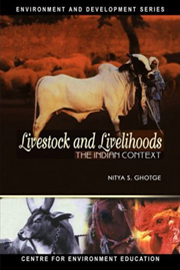Book contents
- Frontmatter
- Foreword
- Acknowledgements
- Contents
- Preface
- Chapter 1 The Beginning …
- Chapter 2 Patterns of Livestock rearing
- Chapter 3 Traditional Practices in Animal Rearing
- Chapter 4 Emerging Trends in Livestock Rearing
- Chapter 5 It must not End: Towards an Alternative Policy
- Chapter 6 Reorienting Ourselves
- Chapter 7 Framework for An Alternate Policy
- References
- Index
Chapter 3 - Traditional Practices in Animal Rearing
Published online by Cambridge University Press: 26 October 2011
- Frontmatter
- Foreword
- Acknowledgements
- Contents
- Preface
- Chapter 1 The Beginning …
- Chapter 2 Patterns of Livestock rearing
- Chapter 3 Traditional Practices in Animal Rearing
- Chapter 4 Emerging Trends in Livestock Rearing
- Chapter 5 It must not End: Towards an Alternative Policy
- Chapter 6 Reorienting Ourselves
- Chapter 7 Framework for An Alternate Policy
- References
- Index
Summary
The diversity in livestock species and breeds and the people who rear them in India is a reflection of the diversity in ecology. The different systems are also a reflection of the forces that influenced the type of system extant. Traditional practices of housing, breeding, nutrition and management were therefore greatly influenced by the agro-ecological diversity of the region, the patterns of rearing and the people who reared them.
Traditional Breeding Practices
Given the large diversity of breeds in the country, one is left in no doubt that careful breeding has gone on for centuries to mould and shape a particular species from its wild state and produce a domesticated species, which yields animal products that can satisfy different needs. There has also been a process of natural selection whereby the strongest animals, or rather in other words, those most resistant to a disease or animals most suitable to a particular environment have survived as breeding stock.
Breeding has always been a selective activity and keeping a quality animal is an expensive proposition. The best breeds were always found belonging to the local rulers. Indian breeds of cattle have attracted international attention from as far back as the nineteenth century when breeds like the Gir, Ongole and Sahiwal were exported to the Americas and Australia under the name Brahman bulls. This was the time when Europe was busy colonizing.
- Type
- Chapter
- Information
- Livestock and LivelihoodsThe Indian Context, pp. 35 - 57Publisher: Foundation BooksPrint publication year: 2004

